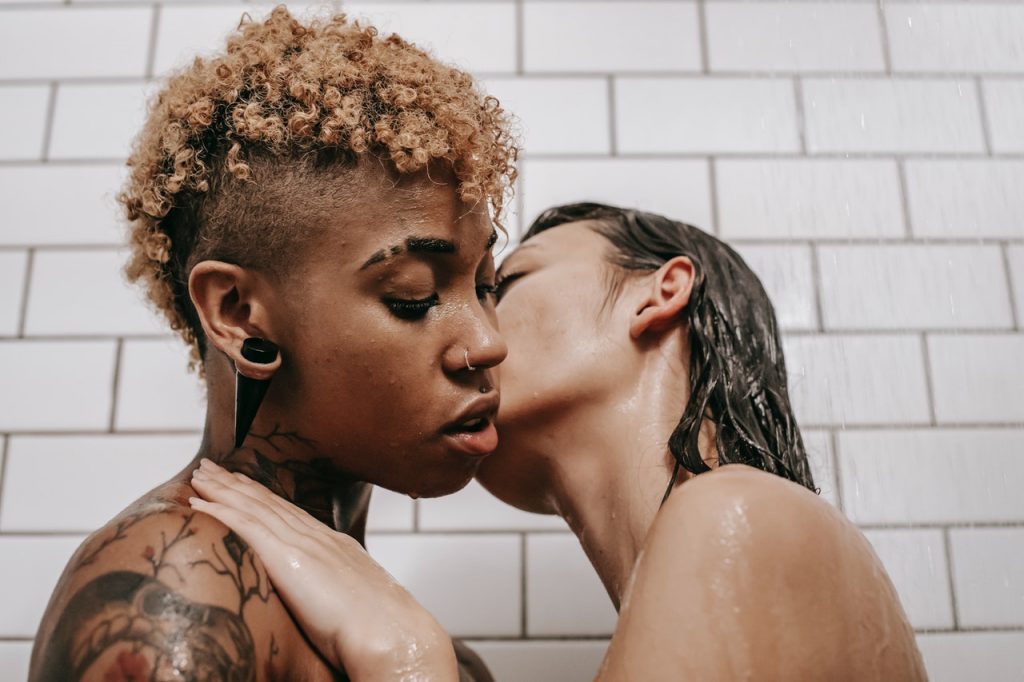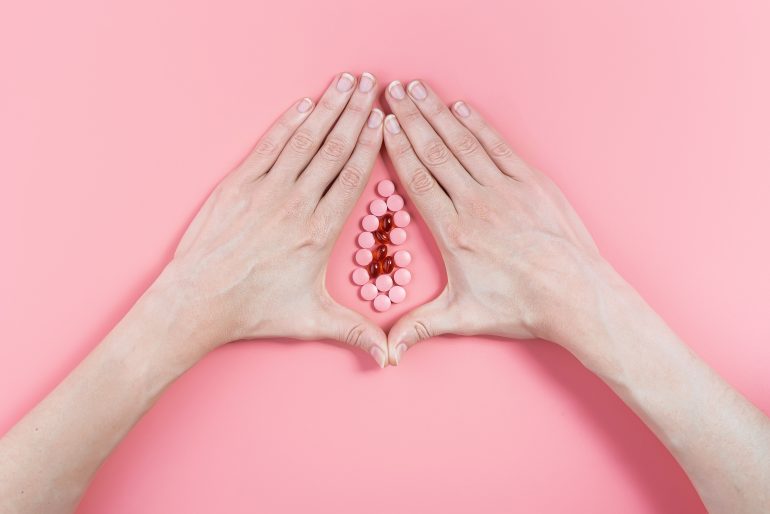
Vagina or Vulva? Why terminology matters? What does this has to do with female desire? Even in 2021, this is a question we can –and should – still be asking ourselves. Especially when it comes to issues as important as women’s bodies, their personal authority over those bodies and their sexual health! Even though there are many women who take an interest in sexual pleasure and the female genitals, there are still a lot of women and men, including plenty of doctors and biologists for that matter, who still fail to use the correct names for the female genitalia. That said, you really should know what you’re dealing with or facing to really feel intense pleasure! So it’s worth taking a look at this exciting and often unexplored world of the female genitals. In this article, we take a closer look at how the vulva is structured, what is involved in sexual arousal and how education about the vulva can lead to better sex.
Victory for vulva – What does the word ‘vulva’ actually mean?
Let’s stop beating around the bush. The correct term for the vulva, or female genitalia, is still not used widely enough. According to a vulva study from Lucerne, more than 30% of women do not know what is meant by the word vulva. Sadly, this is the result of incorrect information from doctors, misleading illustrations in biology books and outdated teaching in schools. Terms like pussy, foof and ‘down below’ are still widely used. We urgently want to change this, so let’s start by taking another look at the words.
So, once more with emphasis: vulva is the outwardly visible female genitalia and includes the pubic mound, the vulvar lips and the external portion of the clitoris.
How is the vulva structured?
The vulva is made of up the following:
- Outer lips
- Inner lips
- Clitoris consisting of clitoral hood, clitoral crura and clitoral glans
- Vestibular bulbs
- Vagina (vaginal opening and vagina, which is the tube connecting the vulva to the internal sex organs)
- Urethral opening
Did you know that the vestibular bulbs, which surround the vaginal opening and sit beneath the clitoral crura, swell in size when you are aroused and the clitoral crura go hard? Fascinating, right?
Tip: Here’s something to try if you haven’t already! Use a small mirror to look at your vulva and get to know how big and fascinating your vulva – and therefore your sexual desire – is.
What is it in the vulva that determines our sexual arousal?
It is very important to use the right terms, and knowing how the female genitalia are structured helps us better understand our sexuality. Let’s take a closer look at the pleasure points in the vulva so we can express our sexual pleasure freely.
Let’s take a closer look at the pleasure centre in the vagina.
The clitoris, the empress of arousal. 😊The clitoris, which scientists also consider to be the counterpart to the penis, is the pleasure centre that is dedicated exclusively and solely to sexual pleasure. It is ten times more responsive than the glans of the penis and 50 times more sensitive because the nerve endings are concentrated in a smaller area. The clitoris is about 11 cm long on both sides, making the average clitoris 2 cm ‘longer’ than the average penis, and it can double in size during sexual arousal. Fun fact: the latest research has shown that the skin of the vulva also contains tiny genital corpuscles, which are responsible for the sensation of pleasure.

Female pleasure – there’s no room for an orgasm gap
As we have already seen, the clitoris is the pleasure centre of the female anatomy and, because it contains the clitoral glans, the hood and the clitoral crura, it is responsible for our orgasms. Contrary to popular belief, orgasms are actually only possible in the clitoris. A mere 10% of women come vaginally, and that’s only because penetration also stimulates the base of the clitoris from the inside. It’s no surprise then that there is still a so-called ‘orgasm gap’ in heterosexual relationships. A full 95% of heterosexual men always reach orgasm during sex. For heterosexual women, this figure is just 65%. In comparison, homosexual men reach orgasm 89% of the time and homosexual women 86%.
The obvious hypothesis here is that homosexual women reach orgasm more easily because they are so familiar with how their own genitals are put together and how they work, making them less ashamed of their own pleasure. That’s where heterosexual relationships should be heading too, right? 😊
Educating people about the diversity of vulvas leads to better sex
Before we wrap up by explaining the different types of vulvas there are, we want to start by saying that every single vulva is as unique as a fingerprint. They can be flat or undulating, big or small, light or dark. One thing worth stressing is that variation and asymmetry are the norm, and this should be normalised in our attitudes as well! 😊 After all, the more comfortable you feel in your body, the better your sexual desire and experiences will be.
What types of vulvas are there?
Generally speaking, we can say that the inner lips or labia may be shorter than the outer ones and vice versa. Needless to say, the labia can also be symmetrical. Interestingly, a vulva can look completely different depending on what perspective you look at it from.
The vulva can take on different shapes depending on the sex position and state of arousal, for example when masturbating or engaging in anal sex. It may be more swollen, it may change colour, the vulva may ‘open up’ or the inner lips may protrude more.

Here’s a rundown of some of the different shapes that are possible (among others!):
- Asymmetrical inner lips, with one side longer than the other
- Curved outer lips
These look like a horseshoe shape and meet at the front, covering the inner lips - Inner lips that tend to be longer than the outer lips
- Outer lips that tend to be longer than the inner lips
- ‘Flat’ outer lips, which unlike other variations are relatively flat and sit just outside the inner lips, so that the inner lips are still very easily visible
Particularly if your inner lips are longer or more pronounced than your outer lips, you can always use intimate personal lubricant to prevent chafing as well as using lubricant during sex or when you masturbate 😊
So now we’ve seen how the vulva is structured, what influences sexual arousal and how education about the vulva can lead to better sex. Once again, we see how important a positive body image is for our sexuality and ultimately how education about the female genitals can lead to a more fulfilling sex life. That’s why we are making this appeal, especially to heterosexual men: please empower your partner by celebrating the uniqueness of her vulva and therefore her sexuality.
#noshame #vulva #sexuallyaware #normalizelube
Editor’s note: The content of this blog always includes same-sex relationships, even if examples given are of heterosexual relationships.

